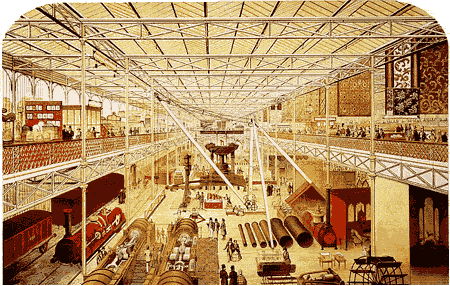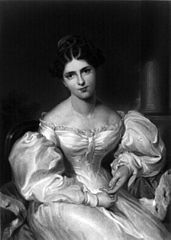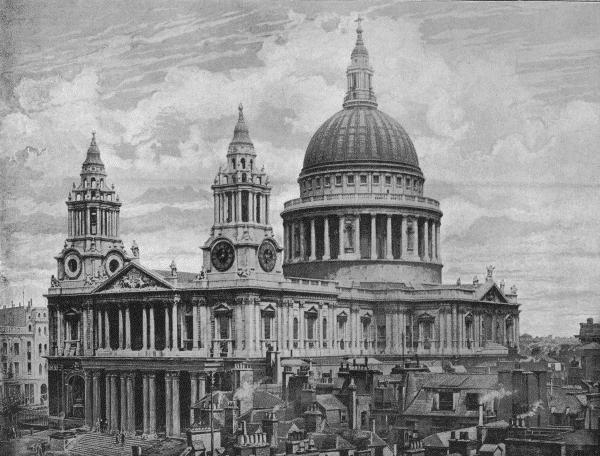
Tracks, Trains, and Tremors —
Observations on the Cultural History of Railroading
The Cultural A Priori
The Transcontinental Railroad
Industrialized Consciousness
The Modern Accident
Cinematic Vision
Miscellaneous & Picture Gallery
| Most of the working people, who came to the Great Exhibition on the "Shilling Days," arrived by rail, often from the north of England. King's Cross station had been opened in 1850 and there were nearly 7,000 miles of track linking London with the towns of the Midlands and the North |

I had been unluckily separated from my mother in the first distribution of places, but by an exchange of seats which she was enabled to make she rejoined me when I was at the height of my ecstasy, which was considerably damped by finding that she was frightened to death, and intent upon nothing but devising means of escaping from a situation which appeared to her to threaten with instant annihilation herself and all her travelling companions.
— Fanny Kemble attending the opening of the Liverpool and Manchester Railway, 1830
It was only yesterday, but what a gulf between now and then. Then was the old world. Stage-coaches, more or less swift riding horses, packhorses, highwaymen . . . . But your railroad starts a new era . . . . We who lived before railways and survive out of the ancient world are like Father Noah and his family out of the Ark.
— William Makepeace Thackeray

St. Paul's Cathedral had best be converted into a terminus, what else will it be fit for when every railway runs right into London.
— Punch magazine, 1840s, at the height of "railway mania"
NOTE TO STUDENTS & USERS: The quotations and images in the links above have been assembled from the sources listed at the
end this page (and—in many cases—from web sources not listed in the bibliography). To share these ideas in a class room format would
take an entire semester and is, hence (as the late Victorians would have put it), "immensely impractical." My hope is that you can take the time and
dip into some of the segments to get a sense how one can "think railroad" (or "do trains")—arguably the single-most decisive technological
innovation of the nineteenth century.
For the purposes on how railroad technology has changed the human sense of speed and perception, the most important segments are "Industrialized
Consciousness" (esp. as it appears in Wolfgang Schivelbusch's study, The Railway Journey. The Industrialization of Time and Space in the 19th
Century), and "Cinematic Vision."
Some sources relevant to the cultural history of railroading
- Dickens, Charles. Dombey and Son, 1847.
- Faith, Nicholas. The World the Railways Made. New York: Carroll & Graf, 1990.
- Jennings, Humphrey. Ed. and Intro. Mary-Lou Jennings and Charles Madge. Pandaemonium. The Coming of the Machine as Seen by Contemporary Observers, 1660—1886. New York, Free Press, 1985.
- Jensen, Oliver. Railroads in America. New York: American Heritage, 1981.
- Kirby, Lynn. Parallel Tracks: The Railroad and Silent Cinema. Durham: Duke UP, 1997.
- Marx, Leo. The Machine in the Garden: Technology and the Pastoral Ideal in America. Oxford: Oxford UP, 1964.
- Schivelbusch, Wolfgang. The Railway Journey. The Industrialization of Time and Space in the 19th Century. Berkeley: Univ. of California P, 1989 (1977).
- Semmens, Peter. Railway Disasters of the World: Principal passenger train accidents of the 20th century. London: Stephens Ltd., 1994.
- Simmons, Jack. The Victorian Railway. London: Thames & Hudson, 1991.
- Wosk, Julie. Breaking Frame. Technology and the Visual Arts in the Nineteenth Century. New Brunswick: Rutgers UP, 1992
- For a comprehensive site on English railroads, see http://www.spartacus.schoolnet.co.uk/railways.htm or
- The Industrial Revolution and the Railway System, http://www.mtholyoke.edu/courses/rschwart/ind_rev/indrev.html
- The Art of Memory: Trains + Cinema
- Victorian Railways and their Predecessors (Victorian Web), http://www.scholars.nus.edu.sg/victorian/technology/rrov.html
- How did the railways change the lives. . . in Victorian Britain?, http://learningcurve.pro.gov.uk/victorianbritain/happy/main.htm
- Institute of Railway Studies and Transport Technology, http://www.york.ac.uk/inst/irs/irshome/links/links.htm
- Pictures from Punch magazine, http://www.wandleys.demon.co.uk/punchpix.htm
- Railroads and technological innovation, http://www.bk.psu.edu/academic/sts/transun2.htm
- Charles Dickens, "The Signal Man," http://books.mirror.org/dickens/signalman/
- Railways in the 19th century, http://www.spartacus.schoolnet.co.uk/railways.htm
- Ghosts, trains and trams: the technologies of transport in the ghost stories of M. R. James, http://www.york.ac.uk/inst/irs/irshome/papers/ghosts.htm
- References to class issues at http://cityofshadows.stegenga.net/victorianrailway.html
- The British Rail System of Vict. England and the People, http://www.gober.net/victorian/reports/railroad.html
- Chronology of Railway Crashes, http://news.bbc.co.uk/1/hi/uk/465475.stm
- The Victorians, http://www.schoolsliaison.org.uk/astonhall/changingtimes/victorians/vmenu.htm
- Railways & Empire, http://www.btinternet.com/~britishempire/empire/science/transport/railways.htm
- Train safety in UK, http://news.bbc.co.uk/1/hi/uk/992144.stm
- 20th-century UK rail accident timeline, etc, http://news.bbc.co.uk/1/hi/uk/465475.stm
- Railway disasters in England, etc. http://danger-ahead.railfan.net/
- The Transcontinental Railroad (TTR), http://usparks.about.com/library/weekly/AA051099.HTM, TTR II, TTR III
- History of Railroads and Maps, http://memory.loc.gov/ammem/gmdhtml/rrhtml/rrintro.html
- Narrow Gauge Railroads, http://www.co.el-dorado.ca.us/stories/narrow_gauge.html
- Western Railroads, Transcontinental, http://www.linecamp.com/linecamp/camp_fire/camp_fire2.htm
- From Travel to Tourism, http://www.traverse.com/people/dot/tourism.html
- Steam technology & railroads, http://www.traverse.com/people/dot/tourism.html
- Union Pacific homepage, http://www.uprr.com/aboutup/history/
- Steam Railroad Cartoons
- History of the Missouri Pacific Railroad
- Railroad History for Kids
- Seattle and the Great Northern Railway
- How the Transcontinental Railroad Spurred Relocation